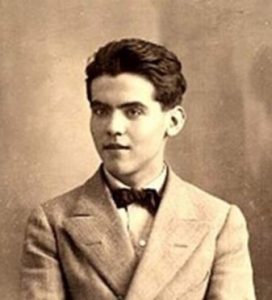In this piece, Saskia (Year 13) considers the question of which character is the most important in our A-level set text, La Casa de Bernarda Alba by Federico García Lorca.
Antes de comenzar, es necesario que definamos la idea de ser ‘importante’. Por supuesto, todos los personajes son ‘importantes’ y no se podría haber una obra si no fuera por cada uno. Por lo tanto, en este ensayo voy a definir la palabra ‘importante’ como ‘influyente’ sobre los otros personajes. Siguiendo con esta idea, la respuesta obvia es Bernarda – la cabeza de la familia. Sin embargo, Adela demuestra su influencia al desafiar el poder de su madre, sugiriendo que ella es el personaje más importante. Pero, de verdad, es Pepe el Romano que tiene el poder total sobre los personajes, haciéndolo el más importante.
Es esencial que barajemos la posibilidad de Bernarda – el personaje que títula la obra – como la más importante, debido a su poder sobre sus hijas y sus empleadas. Se representa esto en la acotación “dando un golpe de bastón”. Aquí, Lorca utiliza el bastón como símbolo de la autoridad moral de Bernarda, destacando su influencia sobre las otras mujeres y por lo tanto insinuando que ella es el personaje más importante en la obra.
Sin embargo, la influencia de Bernarda no es omnipotente, y Adela la amenaza mucho, suponiendo que aquella es más importante que ésta. El dramaturgo describe cómo Adela “arrebata un bastón a su madre y lo parte en dos”, que representa cómo ha habido un cambio en el equilibro de poder entre madre e hija a medida que se avanza en la película. De esa manera, hay un argumento fuerte para clasificar a Adela como el personaje más importante.
No obstante, aún más importante para mí es Pepe el Romano, que tiene control total sobre los personajes a pesar de no estar en escena durante la obra entera. Martirio describe cómo Pepe “es capaz de todo” debido al amor sentido por él por parte de casi todas las hermanas. Para confirmar esto, Adela dice al final, “en mí no manda nadie más que Pepe” cuando denuncia a su madre. Por lo tanto, se puede deducir que Adela puede rebelarse contra su madre pero no contra Pepe, mostrando el poder de este hombre y así haciéndolo el personaje más influyente en la obra.
Todo bien considerado, para mí no cabe la menor duda de que Pepe el Romano es el personaje más importante en la obra. Sí que no se puede negar que Bernarda tiene muchísima influencia sobre su hogar, pero Adela mina su poder a lo largo de la obra, lo que sugiere que quizás sea ella que es la más importante. Sin embargo, la influencia de Pepe se antepone tanto a Adela como a Bernarda. De verdad, como María Josefa señala, las mujeres son “granos de trigo” al lado de Pepe, mostrándonos claramente su importancia. Por lo tanto, aunque se podría decir que un “personaje más importante” no existe, si tuviera que elegir uno, yo diría que es Pepe debido a su poder enorme sobre las mujeres en esta obra.


